The cycle is called Eulerian, iff it contains all edges, exactly one time each. That means that Eulerian cycles can only differ by edge's order (I propose to exclude edge's cyclical permutations as trivial option).
It is possible to find Eulerian cycle, using Fleury's algorithm: in short, move as you like (throwing out the edges you went on), but do not cross the bridge until the whole component is done. "The bridge" is the edge which is the only remaining way between different graph's components.
The proposed algorithm is quite old and well-known, so I won't prove its correctness.
Now, it should be quite obvious that there are graphs containing many different Eulerian cycles.
